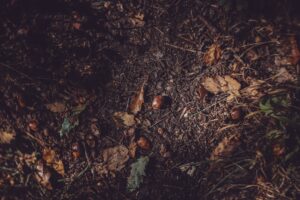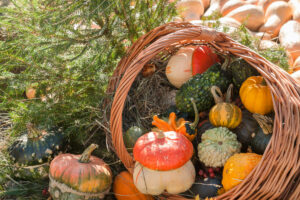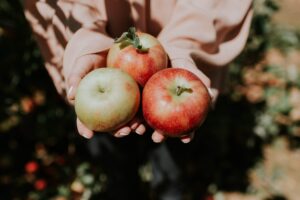The heat of summer, strong and forceful, begins to taper off as we approach the height of harvest season. As Virgo season turns to Libra, so to do the natural seasons shift from bright and green to cool and autumnal. From September 21st to the 24th, the Autumnal Equinox will mark the beginning of fall, and with it comes the mid-harvest festival and the sabbat Mabon.
History of Mabon
Pagans, who celebrate every solstice, equinox, and mid-point in between, are more often than not inspired by the cultures of others who came before them. The Bavarians, who lived where modern Germany now sits, were perhaps among the first to start a festival related to the equinox. Though it began the last week of September and lasted to the beginning of October, it possessed many of the aspects we see in modern Mabon celebrations. Among those is merriment, drinking with the community, and harvesting late summer crops.
The most important part of Mabon’s focus is the harvest. On Lammas, the first harvest and the mid-point sabbat between Litha and Mabon, the crops are harvested and a feast is held to celebrate the mid-summer vegetables and fruit. Mabon is the second harvest of the year, where another celebration and feast is more in line with America’s Thanksgiving.
The name “Mabon” was chosen in 1970 from the character Mabon ap Modron. The name, in my own opinion, does not suit the sabbat in any way (compared to the names of the other sabbats, at least). Regardless, traditions and rituals for Mabon are as old as many pagan cultures, thus earning it a spot upon the wheel of the year.

How to Prepare for Mabon
As we begin to feel the crisp winds of autumn, the best way to prepare for the equinox is to begin your autumnal altar. Go out into nature and collect acorns, falling leaves, anything that you feel is distinctly autumn-feeling. If you can, try and go to an orchard and collect apples and use them to create snacks and drinks for your loved ones.
A feast, similar to Thanksgiving, is usually for Mabon. Food made from freshly harvested fruits, grains, and vegetables should adorn the table, but feel free to add whatever protein you’d like. Chicken and fresh-water fish, in particular, would make for wonderful centerpieces for this meal. Be sure to invite everyone close to you to celebrate Mabon. A feast is best spent with those you love.
Common Symbols of Mabon
Mabon, like every other sabbat, has its own symbols that set it apart from the rest. Knowing of them allows you to best utilize them in your celebration.
Colors:
Autumnal colors are back in fashion with Mabon. While greens and blues might have been prevalent in previous sabbats, for Mabon we can welcome back warm, moody shades like brown, orange, and maroon. Orange, yellow, and gold are also prevalent, as they mirror the color of the leaves as they begin to change for the colder months. Collect candles with these colors to burn on your altar to invite in the energy they hold.
Black and white appear again for this equinox as they did for Ostara. Equinoxes usually dictate the perfect balance of night and day. Black and white candles possess this same energy, so burning them at the same time honors the equinox better than any extravagant ritual might.
Animals:
Birds of autumn are very well respected during the Mabon season. Ravens, blackbirds, hawks, swallows, owls, and turkey vultures are revered as symbols of the harvest season. Their dark visages and quick wit allow us to imagine them as signs of change, intelligence, and cunning. Similarly, foxes and wolves are symbolic of the autumnal equinox. They also hold an inherent intelligence that witches respect.
Botanicals:
Among the popular Mabon herbs and botanicals, there are apples, acorns, wheat, hops, hazel, yarrow, and pumpkins. Incense that uses cedar, pine, and myrrh are sought out as well for altars and holy spaces. Consider collecting these botanicals for your altar or for testing in any self-made spells and rituals you wish to attempt! They can add strength to a Mabon-related spell that you may not be expecting. Consider gathering these botanicals into a cornucopia, which is a very popular symbol for Mabon.

Rituals for Mabon
Mabon can be celebrated in a variety of ways. Here are a few activities and rituals you can do to fully appreciate nature and the equinox to its fullest.
Apple Picking
Harvest is the focus of Mabon, so what better ritual to conduct during this equinox than apple picking! Apple orchards are plentiful this season and it’s an amazing way to connect with local nature and agriculture. Search for farms with orchards in your area and bring a group of friends with you to fully celebrate Mabon. While you pick apples, give thanks to the earth that has allowed these fruit to exist. With the apples you picked, consider making them into ciders, snacks, or anything your heart desires. Repurpose and reuse and always give thanks to Mother Nature.
Food Altar
While your own personal altar may feature food offerings and, in time for Mabon, autumnal plants and seeds, there are other sorts of altars you can create for the autumn equinox. In particular, food altars, featuring wheat, apples, and cooked meals can be an awesome way to celebrate and honor Mabon. Orange and brown candles and local flora can be used to decorate and elevate this altar, but just remember the focus is on the food.
Mabon Apple Ritual
You can conduct a handy and powerful spell with just a simple apple and a knife. Go out to a spot you find safe and quiet, be it the woods or your own room, and sit with the apple. Meditate on thoughts of balance, on grounding yourself to the earth, and feeling how all of nature balances itself. Once you feel ready, cut the apple horizontally to reveal the five-point star of seeds inside. Meditate again on the two halves of the apple. When you’re done, return to your altar and lay the cut fruit out. Once it dries, throw it back into nature.









Great article.
Thank you for reading and commenting on the article! What topics are you interested at? We’re always open for suggestions.